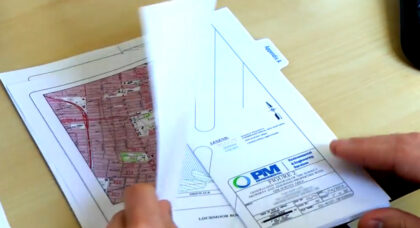Baseline Environmental Assessments (BEAs) – A Practical Guide
Baseline Environmental Assessments (BEAs) are critical tools for individuals and businesses considering the acquisition of property known or suspected to be contaminated. Under the Natural Resources and Environmental Protection Act (NREPA) of 1994, BEAs provide a pathway for new owners or operators to avoid liability for pre-existing environmental contaminations. This guide will explain the concept, process, and benefits of conducting a BEA, emphasizing its importance in protecting purchasers from the costs associated with cleaning up historical contamination.
BEAs are not only about compliance but also about due diligence and risk management in real estate transactions. They allow for informed decision-making, ensuring that potential property owners are aware of any environmental liabilities and can plan accordingly. By the end of this guide, you will understand how to effectively conduct a BEA, comply with Michigan’s legal frameworks, and secure liability protection when buying, leasing, or foreclosing on contaminated properties.
Understanding Baseline Environmental Assessments (BEAs)
What is a BEA?
A Baseline Environmental Assessment (BEA) is a document that describes the environmental conditions of a property at the time of its acquisition. It identifies whether there are contaminants that exceed the thresholds set by Michigan’s most protective cleanup criteria. The assessment is designed to protect new property owners from liabilities associated with existing contamination that they did not cause.
Role of BEAs in Liability Protection
Conducting a BEA is pivotal for any potential owner or operator looking to acquire property with known or suspected contamination. It acts as a statutory tool under Parts 201 (Environmental Remediation) and Part 213 (Leaking Underground Storage Tanks) of the Natural Resources and Environmental Protection Act (NREPA). Successfully conducting and submitting a BEA to the Michigan Department of Environment, Great Lakes, and Energy (EGLE) provides a legal shield against responsibilities for past contaminations.
Relevant NREPA Parts
- Part 201: Focuses on the cleanup and redevelopment of contaminated sites.
- Part 213: Deals specifically with sites contaminated by leaking underground storage tanks.
- Other relevant parts: While Parts 201 and 213 are the most relevant to BEAs, potential property owners should also be aware of Parts 31, 17, 615, and 625, which might impact liability and responsibilities in specific cases.
Eligibility and Requirements for Conducting a BEA
Eligibility for a BEA
While a Baseline Environmental Assessment (BEA) is not mandatory, it is a strategic step for individuals or businesses planning to acquire property in Michigan that might be contaminated. To be eligible for a BEA, several conditions must be met:
- Location: The property must be located within the State of Michigan.
- Environmental Site Assessments: A current Phase I Environmental Site Assessment (ESA) is required, and if it indicates the presence of Recognized Environmental Concerns (RECs), a Phase II ESA must be conducted. These assessments determine the type and extent of contamination and establish the baseline conditions necessary for a BEA.
- Regulatory Exclusions: Properties regulated under certain sections of the Natural Resources and Environmental Protection Act (NREPA) other than Parts 201 and 213, such as landfills, hazardous waste management facilities, and sites with underground storage tanks (Part 211), are not eligible for a BEA. Additionally, properties listed under federal programs like CERCLA or designated as Superfund sites are also excluded.
Requirements for Conducting a BEA
Conducting a BEA involves detailed preparation and precise execution to ensure it meets the state regulations and effectively supports the claim for liability protection:
- Completion of Phase I & Phase II ESAs: Before proceeding with a BEA, a Phase I ESA must be performed to identify any potential environmental concerns. If the Phase I ESA identifies RECs, a Phase II ESA should follow to assess the contamination levels against state regulatory criteria.
- Documentation: The BEA must include a comprehensive report detailing the findings of the ESAs, demonstrating that the contamination exceeds the state’s cleanup criteria. This report forms the basis for liability protection.
Submission Guidelines for a BEA
To ensure compliance and benefit from the liability protections offered by a Baseline Environmental Assessment (BEA), adherence to specific timing requirements is crucial:
- Timing of Assessments: The Phase I and Phase II Environmental Site Assessments (ESAs), along with the BEA, must be completed within 45 days of purchasing the property. This timeline ensures that the assessments reflect the conditions of the property close to the time of acquisition.
- Deadline for BEA Submission: After completing the BEA, it is required to submit the BEA report to the Michigan Department of Environment, Great Lakes, and Energy (EGLE) within six months of becoming the owner or operator of the property. This submission is essential to formalize the findings and establish liability protection under Michigan’s environmental regulations.
Continuing Obligations and Due Care Requirements
Continuing Obligations
After acquiring a property, owners must adhere to specific continuing obligations to maintain liability protections. These obligations ensure that the property remains safe and compliant with environmental standards. They include:
- Notifying Authorities: Landowners are required to provide all legally mandated notices concerning the discovery or release of any hazardous substances.
- Exercising Appropriate Care: Owners must take reasonable steps to stop or prevent any ongoing or future releases of hazardous substances. This also involves measures to prevent or limit human and environmental exposure to previous releases.
- Cooperation and Access: Property owners must offer full cooperation, assistance, and access to authorized persons conducting response actions or natural resource restoration on their properties.
- Land Use and Institutional Controls: Owners need to comply with land use restrictions and ensure their activities do not impair the effectiveness of institutional controls placed on the property.
- Responding to Requests: It is imperative to comply with information requests and subpoenas related to the environmental condition of the property.
Due Care Requirements
The due care requirements detail the responsibilities of owners or operators of contaminated properties concerning hazardous substances. These responsibilities are essential to prevent any exacerbation of contamination and ensure safety:
- Preventing Exacerbation of Contamination: Owners must avoid any actions that could worsen the existing contamination levels at the property.
- Preventing Unacceptable Human Exposure: Measures must be taken to mitigate risks such as fire and explosion hazards to make the property safe for its intended use, protecting public health and safety.
- Taking Precautions Against Third Party Actions: Reasonable precautions should be taken to guard against foreseeable acts or omissions by third parties that could affect the property’s condition.
- Providing Notifications: It is crucial to keep the regulatory agencies informed by providing necessary notifications about the property’s environmental status.
Importance of Hiring Qualified Environmental Professionals
The BEA process should be conducted by qualified environmental consultants who are experienced in performing Phase I and Phase II ESAs according to ASTM standards and federal AAI rules.
PM Environmental has expertise in navigating both federal and state frameworks that offer liability protection to buyers of contaminated properties.
Moreover, PM Environmental has developed and executed various engineering solutions, such as isolation zones and containment structures, to effectively separate existing contamination from possible new releases at contaminated sites. Additionally, we have created several contaminant Fate and Transport models to predict the behavior of existing contamination.
Learn more about how PM Environmental can help by reviewing our Baseline Environmental Assessment Services page.



